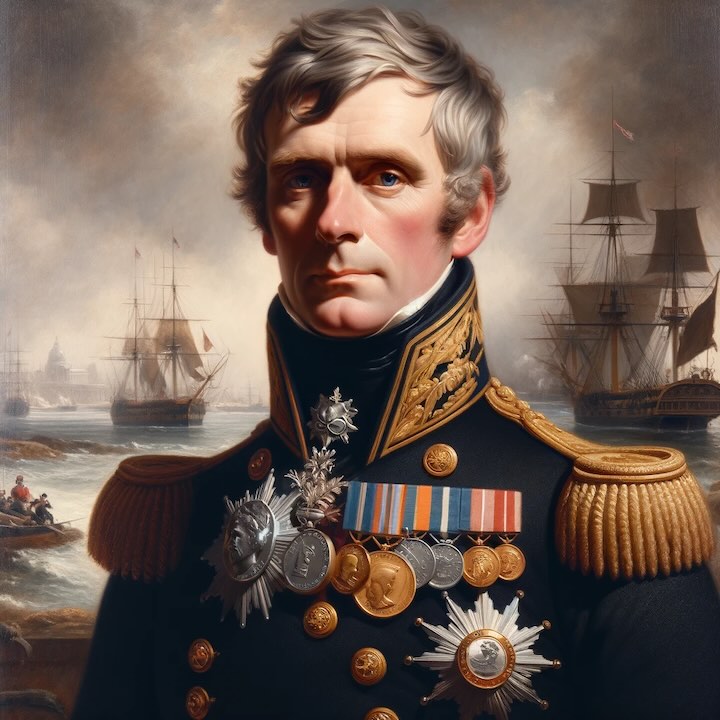Horatio Nelson (1758-1805)

Admiral Horatio Nelson, an iconic English naval commander, rose through the ranks after joining the navy at age 12. Known for his decisive victories, such as the Battle of the Nile, Nelson lost an eye and an arm in battle. His most famous triumph, the Battle of Trafalgar, ensured British naval supremacy but cost him his life. He was buried in St. Paul’s Cathedral..
Admiral Horatio Nelson, a celebrated naval commander, is one of England’s most revered military figures. Born on September 29, 1758, in Burnham Thorpe, Norfolk, Nelson came from a modest background. His father, Edmund Nelson, was a local parson, and Horatio was one of eleven children. Showing an early interest in the sea, he joined the Royal Navy at the remarkably young age of 12. His uncle, Captain Maurice Suckling, played a crucial role in securing his entry into the navy, thus beginning a career that would lead Nelson to become one of history’s greatest naval commanders.
In his early naval career, Nelson served on a number of ships, participating in missions that took him to various corners of the globe, including the Caribbean, the Mediterranean, and North America. His time in the Caribbean, particularly in the West Indies, helped shape his naval tactics and command style. However, it was in the Mediterranean during the French Revolutionary Wars that Nelson began to gain significant recognition.
During the Mediterranean campaigns, Nelson initiated his famous love affair with Emma Hamilton, the wife of Sir William Hamilton, the British ambassador to Naples. The relationship between Nelson and Emma caused a scandal in English society, but it did not detract from his military accomplishments.
Nelson’s first major triumph came during the Battle of the Nile in 1798, a crucial conflict in which he decisively defeated Napoleon Bonaparte’s fleet. This victory not only established Nelson as a national hero but also cemented British naval supremacy in the Mediterranean. For his success, Nelson was awarded a peerage, being made Baron Nelson of the Nile. Additionally, he was granted a generous pension and other monetary rewards for his service to the crown.
Despite his success, Nelson paid a personal price for his achievements. During his battles, he sustained multiple injuries, losing the sight in one eye and later, his right arm. These losses did little to dampen his fighting spirit, as he continued to lead the Royal Navy in further engagements.
After his Mediterranean victories, Nelson resigned his command to return to England, where he lived for a time with Emma Hamilton. Emma bore Nelson a daughter named Horatia in 1801. That same year, Nelson was promoted to the rank of vice admiral, and he soon found himself once again called to duty. He participated in the Baltic campaign during the Napoleonic Wars, continuing to demonstrate his strategic brilliance.
Nelson’s final and most famous battle took place at Trafalgar on October 21, 1805. In this decisive battle, Nelson commanded the British fleet against a combined French and Spanish naval force. The victory at Trafalgar ensured Britain’s naval dominance for the rest of the Napoleonic Wars, but it came at a great cost. Nelson was mortally wounded during the battle, dying aboard his ship, HMS Victory.
Nelson’s body was brought back to England, and he was given a hero’s burial at St. Paul’s Cathedral in London. His death marked the end of an illustrious naval career, but his legacy as one of Britain’s greatest military leaders endures to this day.
 >
>